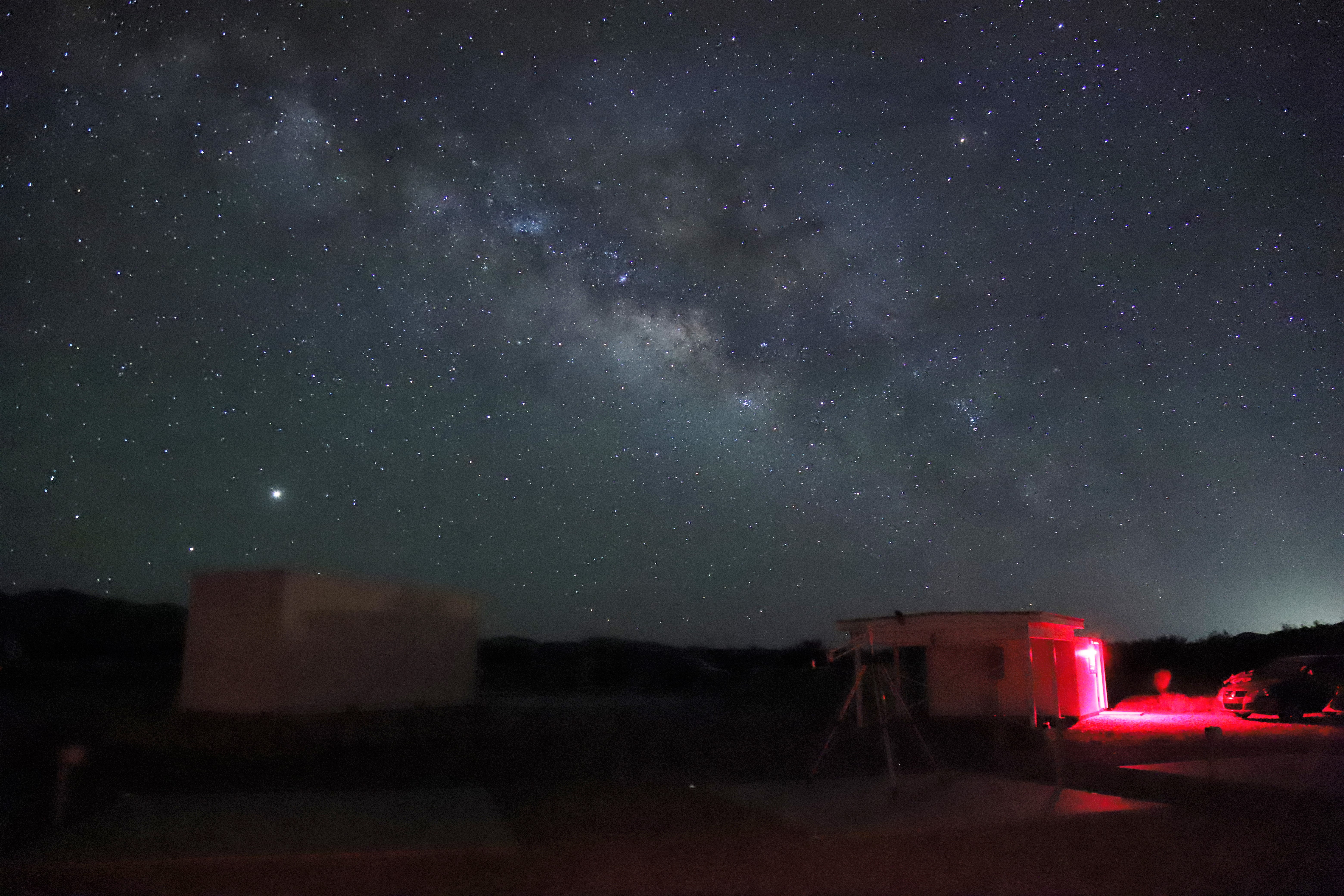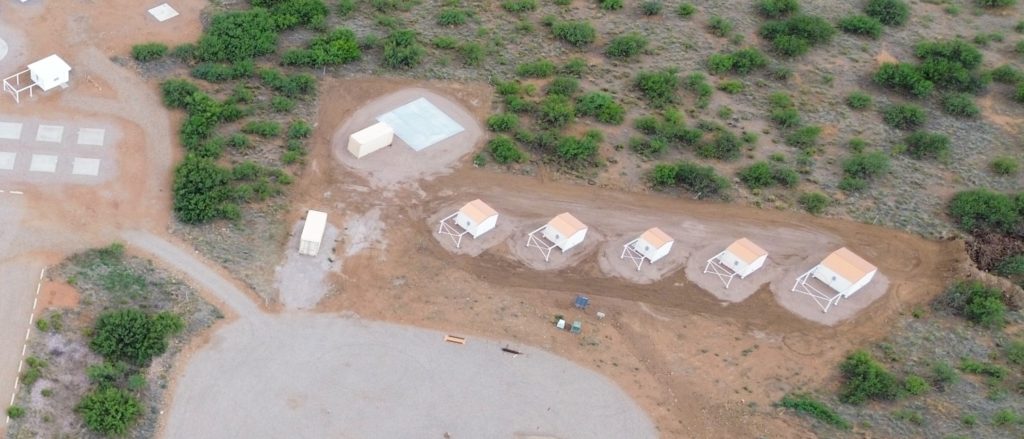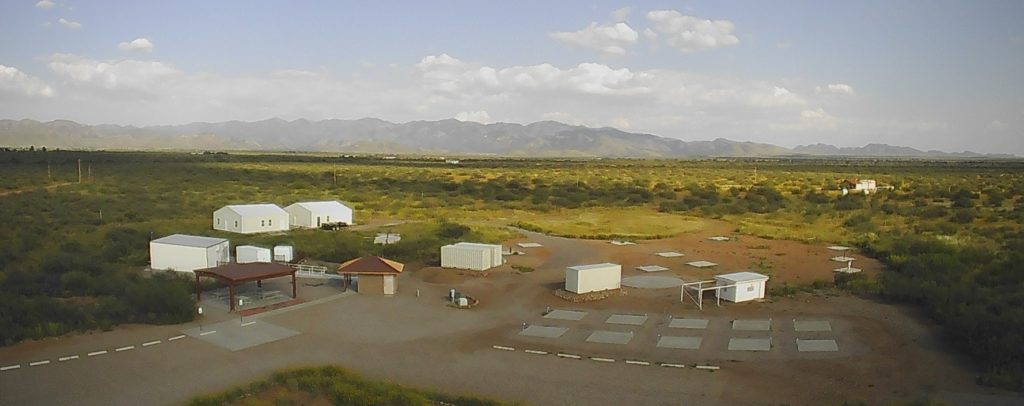The Mission of the Tucson Amateur Astronomy Association is to provide opportunities for members and the community to learn about and share the joy and excitement of Astronomy through observing, education and fun.
The TAAA dark site is a complete observing experience. The Chiricahua Astronomy Complex (CAC) is on 16 acres of land in the dry desert of Southern Arizona, at 4,800 feet elevation in Pearce, AZ. Located an hour and a half east southeast of Tucson, the site is bordered by the Chiricahua mountains on its east and the Dragoon mountains on the west, so its sky is isolated from city lights. It is under Bortle 1 night skies. The location is remote enough to expect pristine skies for years to come, but its amenities are complete enough to make observing quite comfortable.
This property, owned by the TAAA, a 501(c)3 non-profit corporation, has a full complement of services including electricity, sleeping rooms, rest rooms, classroom space, showers, kitchen facilities, sky monitoring systems, security cameras, water and high-speed fiber-optic broadband service. The place has been specially designed for both advanced observers and those just learning to observe the sky.

The strategic plan for the TAAA dark site at CAC contains plans for observatories, leased and operated by members. There are also plans for up to three 30’x30′; pads with storage containers for large Dobsonian telescopes. In 2022 TAAA and 6 member lessees agreed to move forward initially with 5 roll-off roof observatories and one large Dobsonian pad. That project was completed in 2023.
The observatories are located on the south side of the current site – See our current Dark Site Master Site Plan and the detail of the Member Observatory layout.
The observatories have a common roll-off roof design, permitted by the county and range in size from 10’x10′ to 12’x12′ to 16’x16′.
The use of each member observatory is governed by a long-term agreement between the member and TAAA. The equipment installed in each observatory is determined by and owned by the respective members.
Further information about the project can be obtained from the Member Observatory Coordinator at memberobservatories[at]tucsonastronomy.org



